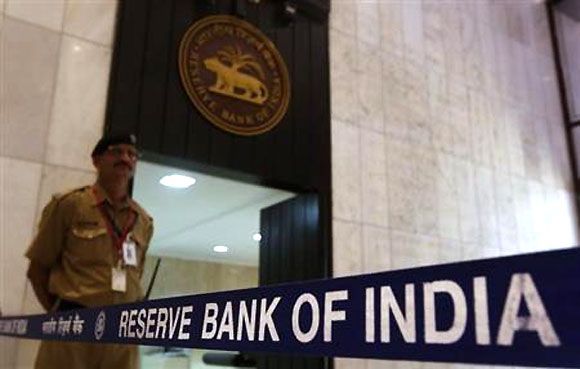 Near-normal monsoon, falling crude oil prices help keep inflation under check but this window of opportunity might not last for long
Near-normal monsoon, falling crude oil prices help keep inflation under check but this window of opportunity might not last for long
While status quo in the coming monetary policy review is widely expected, a change in the macroeconomic dynamics could offer a window for the Reserve Bank of India governor to reduce interest rates for a fourth time this year.
Though Consumer Price Index-based inflation rose to a nine-month high of 5.4 per cent in June, mainly due to an increased rate of price rise in food items, this is expected to come down substantially in August due to a higher base effect.
Also, a big worry of the central bank was a weak monsoon but the latest data shows rainfall has been only three per cent below normal.
Scanty rain would have put extra pressure on food prices.
In addition, there has been a minimal rise in the government’s minimum support price for crops.
All these will have a sobering effect on headline inflation numbers.
“Strong food policy and management will be important to help keep inflation and inflationary expectations contained over the near term,” the central bank had said at its second bi-monthly policy statement.
Also, crude oil prices have been on a downward trajectory for two to three weeks, since sanctions were lifted from Iran.
India imports a third of its crude oil requirement.
And, on Thursday, the US Federal Reserve indicated it was on track to raise rates but the timing was not clear, at least not in September.
This would allay fear of exit in the near term of foreign portfolio investment, resulting in volatility in domestic financial markets.
All these factors, along with a favourable base, could bring down August inflation, the data for which will be available in September.
On the other hand, from September onwards, the favourable base will diminish and the inflation trajectory is likely to head north, up to six per cent.
RBI has set an inflation target of less than six per cent by January 2016 and four per cent (plus or minus two per cent) by the end of the two years starting 2016-17.
Market participants say the next policy review is probably the final opportunity for RBI in this financial year to reduce rates.
It has been criticised by some for delaying this.
The central bank has emphasised that along with monetary policy, a government action is equally important to revive growth.
“Monetary easing can only create the enabling conditions for a fuller government policy thrust that hinges around a step-up in public investment in several areas that can also crowd in private investment,” RBI had said.
It first cut its lending rate in January.
Till now, the central bank has reduced the key policy rate, the repo, by a cumulative 0.75 percentage points, including a 0.25 percentage cut in early June.
The repo rate, at which banks borrow from RBI, is now 7.25 per cent.
A rate cut could be hindered by the July inflation numbers, a nine-month high. This will have an impact on inflation expectations.
The other factor is transmission of earlier cuts; banks have so far reduced their lending rates by 25-30 basis points, in response to the 75 bps cut by RBI.
The central bank had said it expected full transmission of policy rate action.










